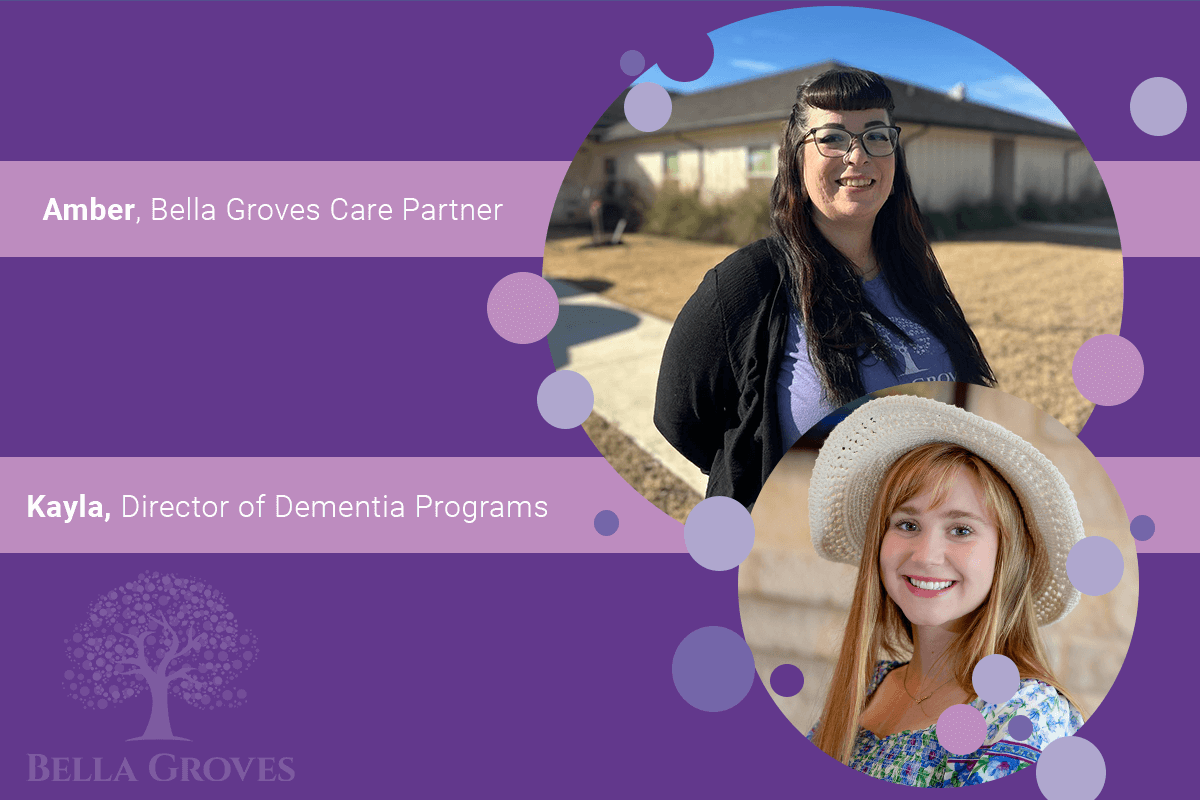
What is “Looping” and How Does It Impact Communication in Dementia Care?
Effective communication is a key pillar of providing meaningful care for people living with dementia. When words become harder to process, and memories become fragmented, finding ways to truly connect is essential.
One powerful strategy that has been gaining attention is “looping,” a compassionate communication technique tailored for dementia care. Looping enables a deeper understanding, reduces frustration, and creates moments of connection, even amidst the challenges of memory loss.
At Bella Groves, we believe in empowering families and care partners with the support and knowledge they need to provide impactful dementia care. Our team is here to help you on this complex but profoundly meaningful journey.
What is Looping?
Looping is a communication strategy used to connect meaningfully with someone experiencing memory loss by repeating and validating parts of their words, ideas, or thoughts. This intentional approach creates a “loop” of connection that bolsters understanding and reduces communication barriers.
Here’s an example of looping in practice:
- Person Living with Dementia: “I need to call my sister to tell her about dinner.”
- You (Looping, Knowing Their Sister Passed Away): “You want to talk to your sister about dinner. That’s really important to you.”
This practice honors their words and emotions, showing them that you’re both present and listening. It’s not about corrections; it’s about creating a sense of being heard and understood.
Looping is especially effective for individuals with dementia because it meets them where they are—acknowledging their current experience without confrontation or placing demands on their memory.
Why is Looping Effective for Dementia Care?
Looping works because it centers on connection rather than correction. Dementia can make conversations challenging, leading to repeated questions or fragmented speech. These miscommunications often cause frustration, but looping redirects the focus to validation and trust-building.
Here’s why it works:
- Encourages emotional connection: Looping provides reassurance, showing that the individual’s feelings and expressions are valued.
- Reduces frustration: It sidesteps the need for memory recall, helping avoid unnecessary tension for both parties.
- Promotes collaboration: Looping serves as a stepping stone for smoother conversations, making ongoing interactions less overwhelming.
By creating a communication loop, caregivers can foster a safe, empathetic environment for their loved ones.
Practical Strategies for Using Looping
Implementing looping into your daily interactions doesn’t require advanced training—just a bit of mindfulness and patience. Here are some practical ways to get started:
1. Listen Actively
Pay close attention to what the person living with dementia is saying. Focus on their tone, words, and emotions rather than the accuracy of their statements. This step creates the foundation for looping.
2. Repeat and Validate
Reflect their words back to them. For instance, if they repeat the same question, respond by repeating their statement and offering gentle reassurance.
Example:
- Person Living with Dementia: “Did I feed the dog today?”
- You (Looping): “You’re thinking about taking care of the dog. It’s great how much you care for your pets.”
3. Use a Calm and Reassuring Tone
Your tone is just as important as your words. Speak slowly, with warmth and empathy, to help them feel comfortable and secure.
4. Avoid Reality Checks
When a person living with dementia recalls something incorrectly, avoid trying to correct them. Instead, use looping to honor their feelings and help them stay engaged in the conversation.
For instance, If they recall a family event that didn’t happen exactly as they describe it, you could say, “That sounds like a lovely memory,” instead of pointing out the inaccuracy.
5. Practice Patience
It’s normal for conversations to feel repetitive when caring for someone with dementia. Looping can help ease that frustration, but mastering this approach takes time. Be kind to yourself as you learn.
By consistently integrating these strategies, you’ll start to notice how looping transforms communication into a more meaningful and positive experience.
The Benefits of Looping in Dementia Care
When used effectively, looping enhances communication and creates a ripple effect of positive changes in the caregiving dynamic.
For the Person with Dementia:
- Feeling Heard: They experience validation, which helps reduce anxiety or confusion.
- Strengthened Connection: Looping fosters a sense of presence and emotional closeness, even during challenging moments.
- Improved Comfort: They feel less stressed when they are met with understanding rather than correction.
For the Care Partner or Family Member:
- Reduced Stress: Looping helps sidestep conflict, making caregiving more manageable.
- Better Relationships: Connecting on an emotional level strengthens bonds over time.
- Empowerment: Caregivers gain confidence knowing they’re using tools that work.
These benefits create a win-win situation, improving the quality of care and well-being for everyone involved.
Building Meaningful Connections
Effective communication is central to navigating dementia care, and looping offers a simple yet impactful way to foster connection. By listening actively, validating emotions, and responding with empathy, care partners and family members can create an environment of trust and understanding for their loved ones.
At Bella Groves, we’re dedicated to partnering with individuals and families to ensure no one feels alone in this journey. If you want to learn more about dementia care techniques or simply need compassionate guidance, please contact our Bella Groves team.
Together, we can make each moment matter.

